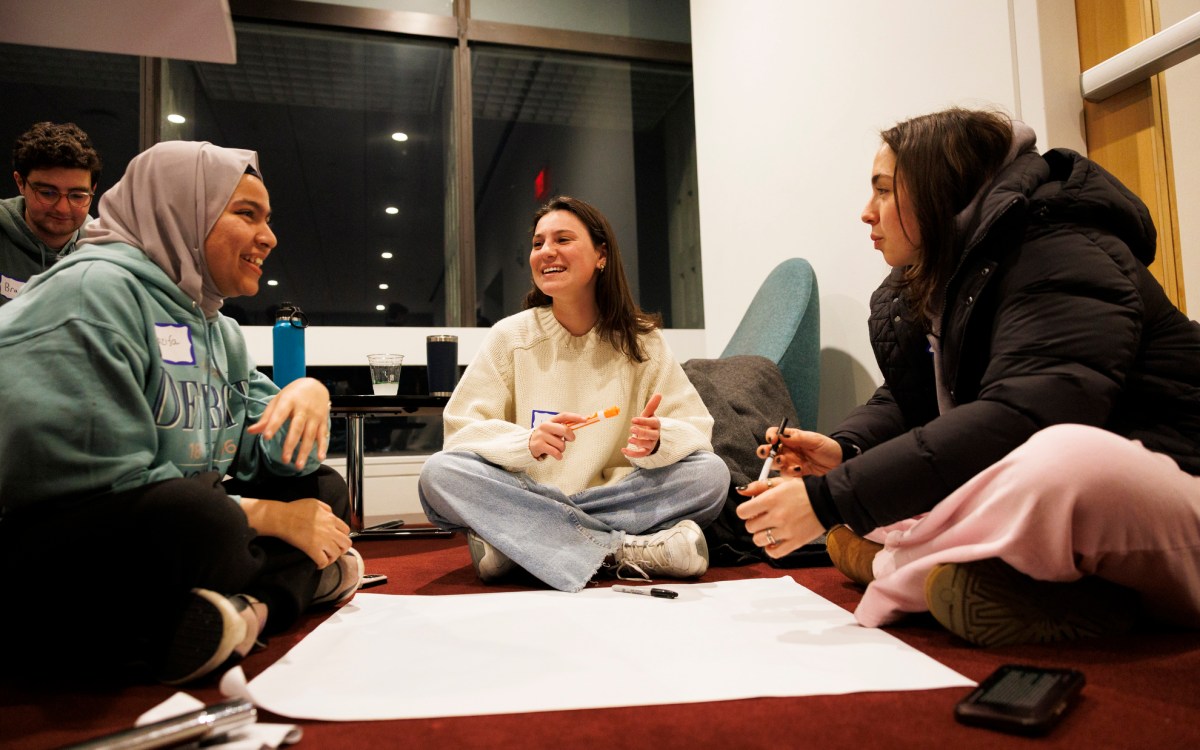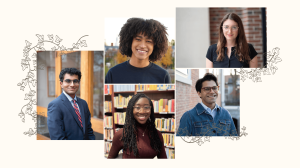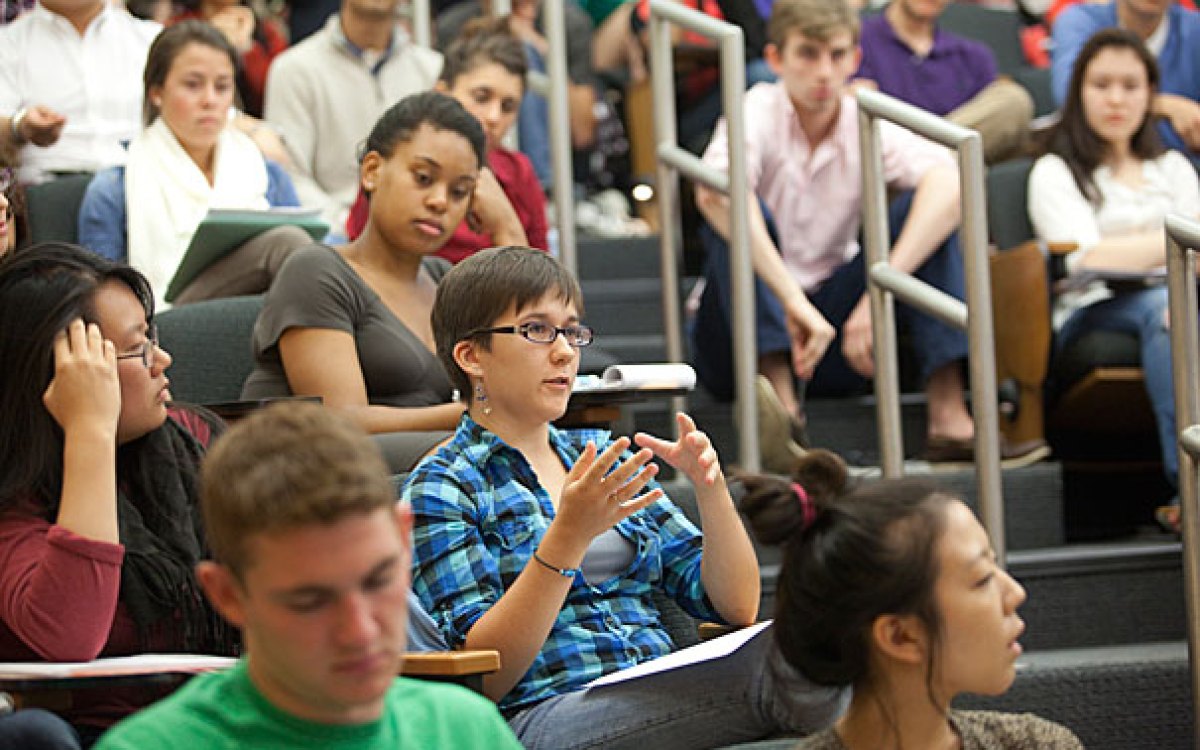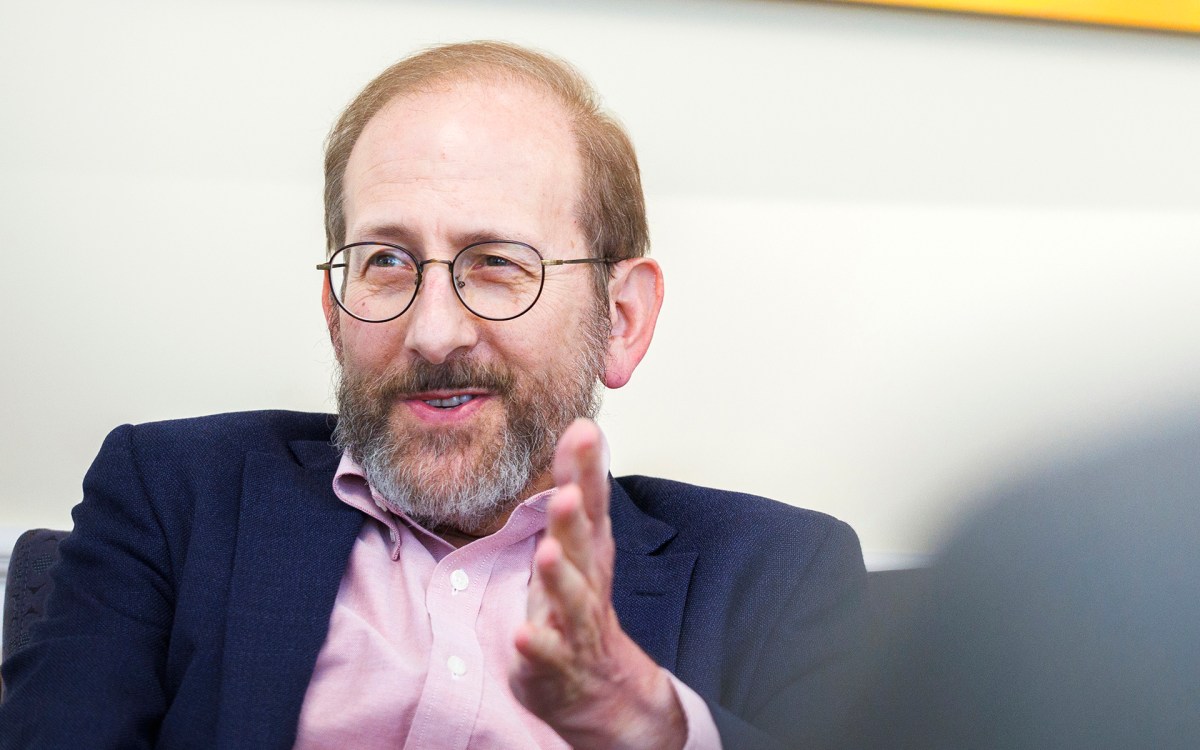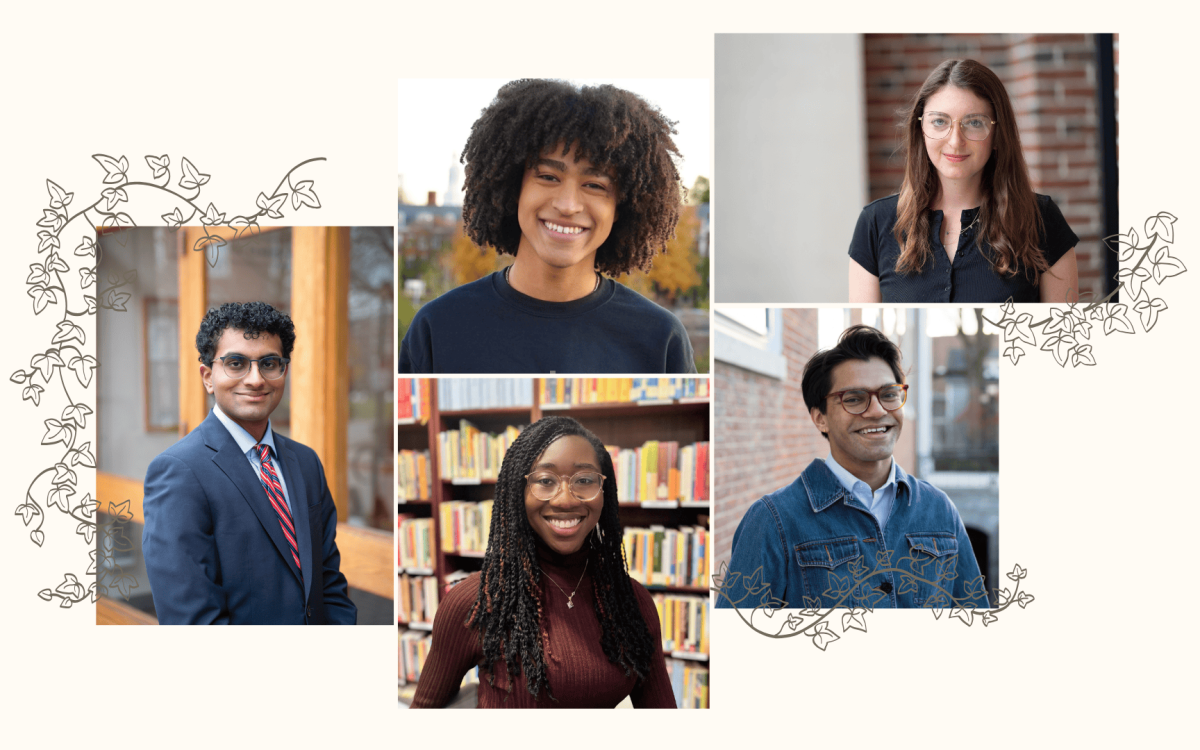College admits 2,037
Record 39,041 applied to Class of 2020
More like this
The members of the Harvard Class of 2020 received their acceptance notifications at 5 p.m. on Thursday. Letters were opened across America and around the globe, inviting students from different backgrounds and life experiences to join and contribute to one of Harvard’s most enriching and diverse classes to date.
The College is admitting 2,037 applicants from a record pool of 39,041.
“Harvard’s financial aid program allows us to attract and bring together outstanding students from profoundly different walks of life who contribute enormously to our classroom and residential learning environments,” said William R. Fitzsimmons, dean of admissions and financial aid. “For the Class of 2020 admissions, economic diversity has increased, and records were set for both African-American and Asian-American students. Since launching the Harvard Financial Aid Initiative (HFAI) in 2005, Harvard awarded nearly $1.5 billion in financial aid to undergraduates, and those investments have shaped a learning environment for all of our students that is truly remarkable by any standard.”
Harvard costs the same or less than most public universities for 90 percent of American families, and students can graduate debt-free, since no loans are required. One in five of Harvard families has an annual income of less than $65,000 and pays nothing toward the cost of their students’ education.
The majority of Harvard students receive need-based financial aid, and the average family contribution is $11,000. Families with incomes up to $150,000 and typical assets pay 10 percent or less of their annual incomes. In addition, families with higher incomes can receive need-based aid depending on individual circumstances.
Although many families are still completing their financial aid forms, the percentage applying for financial aid has risen, more were eligible for application fee waivers, and preliminary assessments indicate that more families need substantial assistance.
“Harvard’s financial aid program awards need-based grants and never requires students to take out loans to cover the cost of their education,” said Sally C. Donahue, Griffin Director of Financial Aid. “If you have questions, we’re here to help. Our office will be open on weekdays from 8 a.m. to 8 p.m. EDT in April and on Sunday, April 17, during the visiting program to speak with admitted students and their families. We stand ready to assist students with financial concerns at any point during their College years.”
As part of its financial aid program, Harvard spent $3.3 million in 2015 to help students pay for health insurance, books, travel costs home, fees for events, performances, activities, and more so that every student could engage in the Harvard experience.
For about one in five freshmen in the incoming class, there will be new help to make the transition to college: a $2,000 “start-up” grant awarded to those whose annual family income is $65,000 or less. The grant is part of a three-year pilot program providing additional support to eligible incoming freshmen.
“Student recruiters for the Harvard Financial Aid Initiative are vitally important to the many prospective applicants concerned about financial aid,” said Pharen Bowman, director of the program.
“When students hear firsthand from students that Harvard is financially possible for those from modest income backgrounds, the message of access is personalized and the dream of attending Harvard becomes real,” said Mike Esposito, assistant director.
A record 14 percent of the admitted students are African-American, and 22.1 percent are Asian-American, also a record. Latinos are 12.7 percent after last year’s record 13.3 percent; Native Americans are 2.2 percent (1.5 percent last year); and Native Hawaiians are 0.4 percent (0.5 percent last year).
“Undergraduate student recruitment is the heart and soul of our efforts to reach students from many different backgrounds,” said Kaitlin Howrigan, associate director of recruitment. “Student groups reach out directly to prospective applicants, working together where appropriate, to enroll the best class each year.”
“Members of the Undergraduate Minority Recruitment Program (UMRP) played a major role in making the Class of 2020 one of the most diverse in our history,” said Tia Ray, director of the UMRP. “Our dedicated student coordinators have been able to build on the decades of success created by those who are now alumni and are helping us in numerous ways with our work,” she said.
Women constitute 48.4 percent of the admitted students compared with 48 percent last year. About 15 percent of the students admitted to the class are first-generation.
The Harvard First Generation Program (HFGP) informs prospective students and their families that Harvard has long sought those whose parents have not graduated from a four-year college. “The program promotes early college awareness, providing information to help first-generation students navigate the admissions process, and works closely with the Harvard First Generation Student Union, a student organization formed in 2013,” said Niki Johnson, who leads the program. This new initiative adds to the efforts of Kevin Jennings, who organized alumni through the Harvard Alumni Association to serve as mentors, sponsor recruiting events, and reinforce Harvard’s commitment to those who will be the first in their families to attend.
The geographic origins of the class are similar to last year. About 23 percent come from the mid-Atlantic states, 20 percent from the Western and Mountain states, 18 percent from the South, 16 percent from New England, 11 percent from the Midwest, and 12 percent from the U.S. territories and abroad. International citizens make up 10.4 percent of the class, and 8.9 percent are U.S. dual citizens. Eighty-three countries are represented, compared with 79 last year.
Compared with last year, larger percentages of admitted students intend to concentrate in the humanities (16.9 percent vs. 14.8 percent), engineering (14 percent vs. 12.4 percent), math (7.5 percent vs. 6.4 percent), physical sciences (7.3 percent vs. 6.9 percent), and computer science (7.2 percent vs. 5.9 percent). There were declines in the social sciences (21.9 percent vs. 26 percent), biological sciences (18.9 percent vs. 20.1 percent), and undecided (6.4 percent vs. 7.6 percent).
“Once again the applicant pool reflected great strength in terms of standard academic credentials,” said Marlyn E. McGrath, director of admissions. About 13,600 students scored 700 or above on the SAT critical reading test; 15,700 scored 700 or above on the SAT math test; 13,600 scored 700 or higher on the SAT writing test; and 3,300 were ranked first in their high school classes.
“Standardized test scores and grades are only two of the many factors of interest to our faculty as they identify promising scholars for the next generation. Faculty members have devoted many hours to evaluating research and portfolios across all academic and creative disciplines,” said McGrath.
Outreach to admitted students will be important over the next few weeks. Members of the Undergraduate Admissions Council, UMRP, HFAI, and HFGP, the admissions and financial aid staff, teaching faculty, and alumni will write, email, telephone, and meet with admitted students.
“Over 10,000 loyal alumni volunteers are crucial in helping admitted students envision themselves at Harvard,” said Bryce Gilfillian, coordinator of the admissions alumni network. “Their interviews are more important than ever as we make our admissions decisions. They visit schools, call newly admitted students, and host gatherings for them in April. They are a constant inspiration to us in Cambridge and to prospective Harvard students.”
A visiting program for admitted students is scheduled for April 16-18. The program, known as Visitas, enables guests to sample classes, attend faculty panel discussions, concerts, receptions, department open houses, symposia, and events organized by extracurricular groups. More than 1,400 admitted students are expected to visit during Visitas weekend.
“Students admitted to Harvard have many other college choices they could make. Past experience indicates that Visitas often makes the difference in their decision to come to Harvard,” said Visitas Director Timothy Smith. “We have found that many students decide to attend Harvard based on their interaction with faculty and future classmates.”
Admitted students have until May 1 to accept their offers of admission.
